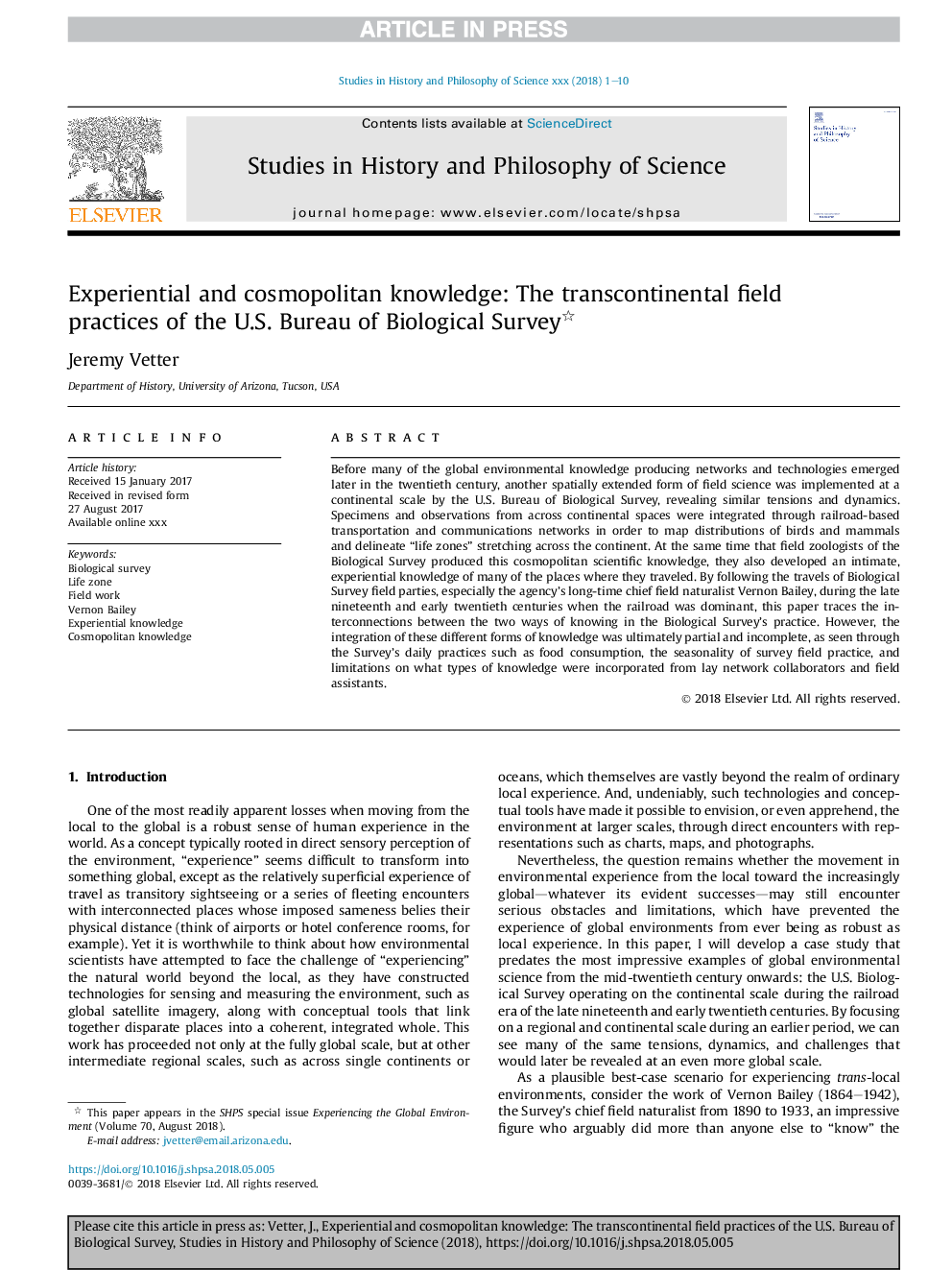| Article ID | Journal | Published Year | Pages | File Type |
|---|---|---|---|---|
| 8942596 | Studies in History and Philosophy of Science Part A | 2018 | 10 Pages |
Abstract
Before many of the global environmental knowledge producing networks and technologies emerged later in the twentieth century, another spatially extended form of field science was implemented at a continental scale by the U.S. Bureau of Biological Survey, revealing similar tensions and dynamics. Specimens and observations from across continental spaces were integrated through railroad-based transportation and communications networks in order to map distributions of birds and mammals and delineate “life zones” stretching across the continent. At the same time that field zoologists of the Biological Survey produced this cosmopolitan scientific knowledge, they also developed an intimate, experiential knowledge of many of the places where they traveled. By following the travels of Biological Survey field parties, especially the agency's long-time chief field naturalist Vernon Bailey, during the late nineteenth and early twentieth centuries when the railroad was dominant, this paper traces the interconnections between the two ways of knowing in the Biological Survey's practice. However, the integration of these different forms of knowledge was ultimately partial and incomplete, as seen through the Survey's daily practices such as food consumption, the seasonality of survey field practice, and limitations on what types of knowledge were incorporated from lay network collaborators and field assistants.
Keywords
Related Topics
Social Sciences and Humanities
Arts and Humanities
History
Authors
Jeremy Vetter,
